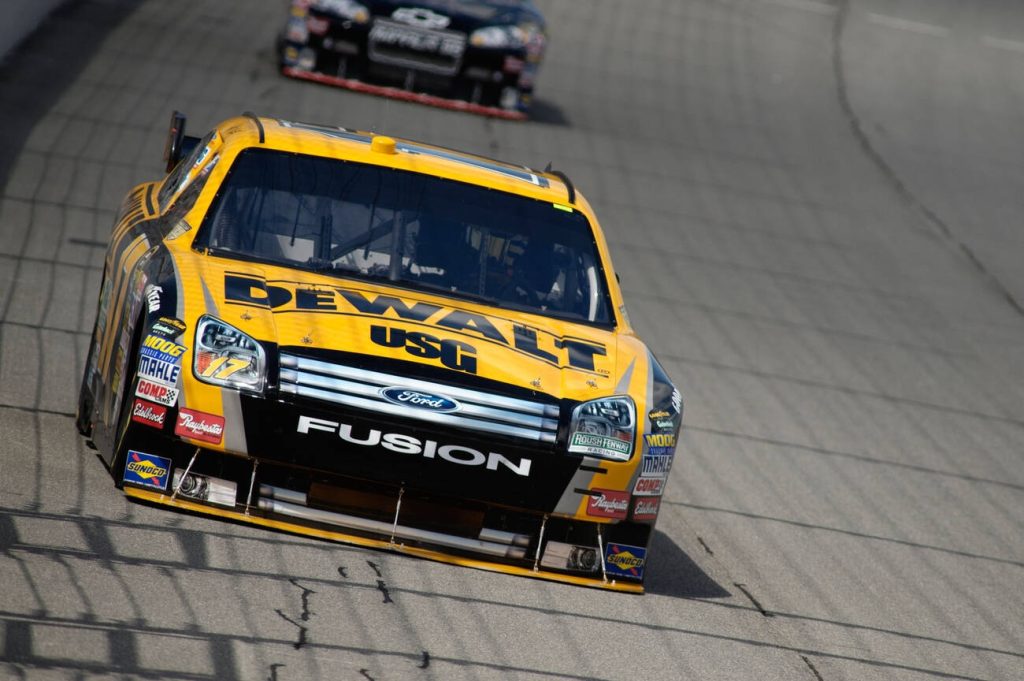With their 900-horsepower engines and lightning-fast acceleration, sprint cars are the ultimate thrill machines. But speed comes at a price, with these high-performance beasts costing anywhere from $80,000 to $100,000. So get ready to dive into the fascinating world of speedway car racing and discover what it takes to push the limits on the dirt tracks.
Top Speeds of Speedway Cars
Speedway cars, such as sprint cars, can reach speeds of nearly 160 miles per hour. When it comes to speed, safety is crucial in the world of speedway car racing. Drivers and teams prioritize safety by implementing various modifications to enhance performance while minimizing risks. Over the years, the evolution of speedway car technology has played a significant role in improving both speed and safety on the track. From advancements in engine power to the development of aerodynamic features, every aspect of these cars has been fine-tuned for maximum performance. Famous speedway car drivers have also contributed to pushing the limits of speed and showcasing what these machines are capable of achieving. The role of aerodynamics cannot be underestimated, as it directly impacts a speedway car’s performance by providing stability and reducing drag at high speeds.
Sprint Car Specifications
If you’re interested in the specifications of a sprint car, you’ll be fascinated to know that these high-powered machines have wings on top to create downforce and help them stay on the dirt track. Sprint car handling is crucial for optimal performance on the track. With a powerful engine boasting 900 horsepower, sprint cars can reach speeds of nearly 160 miles per hour. The aerodynamics of these open-wheel racers contribute to their impressive speed and agility. To maintain peak performance, regular sprint car maintenance is essential. From engine tuning to tire checks, every detail matters. Additionally, sprint cars are equipped with safety features such as roll cages and safety harnesses to protect drivers during high-speed races. So whether you’re an avid fan or aspiring racer, understanding the specifications of sprint cars unveils the thrilling world of this motorsport.
Cost of Speedway Cars
When you’re considering the cost of owning a sprint car, it’s important to factor in expenses like the motor, which can range from $50,000 to $60,000 alone. But that’s just the beginning. A comprehensive cost analysis is necessary to understand all the financial challenges involved in owning and maintaining a sprint car. Here are some key points to consider:
- Maintenance expenses: Sprint cars require regular maintenance and upkeep, which can add up quickly. From engine rebuilds to tire replacements, these costs can eat into your budget.
- Sponsorship benefits: Securing sponsorships can help alleviate some of the financial burden. Sponsors not only provide financial support but also contribute towards team budgets for travel, equipment, and other expenses.
- Financial challenges: The high costs associated with sprint car racing pose significant financial challenges for teams. It takes careful budgeting and resource management to ensure sustainability in this sport.
Racing at Husets Speedway
To experience the excitement of racing at Husets Speedway, you should attend the four-day event where an estimated 35 to 55 cars will be competing. The race brings together some of the top drivers, including the Top 14 World of Outlaw points leaders. However, it’s not all smooth sailing for these drivers. Parts availability can be a challenge, causing delays and affecting race strategies. Towing trailers and cars is no easy task either, but it’s a necessary part of the sprint car lifestyle. Driver safety is also a top priority, with teams relying on sponsors to cover expenses and contribute to towing costs. As a fan, you’ll get to witness thrilling races and experience the exhilaration firsthand. So don’t miss out on this incredible opportunity at Husets Speedway!
Lifestyle of Speedway Car Racers
Living the lifestyle of a sprint car racer means constantly being on the road, towing trailers and sleeping in motels, while relying on sponsors to cover expenses. It’s a demanding lifestyle that requires dedication and passion for the sport. As a sprint car driver, you are part of a close-knit racing community that supports one another through thick and thin. Maintaining your sprint car is crucial to your success on the track, which means spending countless hours in the garage fine-tuning every aspect of your machine. However, all this hard work pays off when you step onto that dirt track and feel the adrenaline rush as you push your sprint car to its limits. The thrill of speed and competition is what keeps you coming back for more, fueled by the support of your sponsors who believe in your talent and help make it all possible.
- Constantly being on the road
- Relying on sponsors for financial support
- Spending hours maintaining your sprint car
Impact of Speedway Car Racing
Sprint car racing has a significant impact on the local economy and attracts a large number of drivers and fans. The economic impact of sprint car racing is undeniable, as it brings in revenue from ticket sales, concessions, and merchandise. Fans have an exciting and immersive experience at sprint car races, witnessing the speed and skill of the drivers up close. Safety measures are crucial in this high-speed sport, with strict regulations in place to protect both drivers and spectators. Race strategies play a vital role in determining the outcome of each race, adding an element of strategy to the adrenaline-fueled competition. Additionally, sponsorship benefits are essential for sprint car teams, as sponsors help cover expenses and contribute to the overall success of the sport.
Maximum Speed and Acceleration of NASCAR Cars
Now, let’s shift our focus to the maximum speed and acceleration of NASCAR cars. These high-performance vehicles are capable of reaching incredible speeds on the track, thanks to advanced NASCAR car technology and meticulous race strategies employed by drivers. To achieve such impressive velocities, NASCAR drivers undergo rigorous training to master their skills behind the wheel. Additionally, NASCAR car aerodynamics play a crucial role in optimizing speed and handling during races. However, it’s important to note that the actual speeds achieved by NASCAR cars can be influenced by various factors including track conditions and weather. So, while these cars have the potential to exceed 200 miles per hour and accelerate from zero to 60 mph in just a few seconds, actual speeds during races may vary depending on these variables.
Fastest Recorded Speed on a NASCAR Track
During a qualifying run at Talladega Superspeedway, Bill Elliott set the fastest recorded time in NASCAR history, reaching speeds of 212.089 miles per hour. Speedway cars like those used in NASCAR are designed to go fast and compete at high speeds on the track. They are much faster than cop cars, which have an average top speed of around 150 to 155 mph. Safety measures in speedway car racing are crucial to protect drivers during high-speed races. Technology plays a significant role in improving speedway cars, with advancements in engineering and aerodynamics enhancing their performance. Throughout the history of NASCAR, there have been several records broken as drivers push the limits of speed. However, it’s important to consider the impact of speedway car racing on the environment, as these vehicles consume fuel and emit greenhouse gases during races. Efforts are being made to make racing more sustainable and reduce its environmental footprint.
Average Speed of NASCAR Cars
If you’re a fan of NASCAR, you may be interested to know that the average speeds of NASCAR cars can reach up to 200 miles per hour on larger tracks like Daytona International Speedway or Talladega Superspeedway. This incredible speed is a testament to the impressive performance and capabilities of these Speedway cars. Here’s what makes them so fast:
- NASCAR car speeds: These vehicles have the power and agility to reach high speeds, allowing them to compete at an intense pace.
- Speedway car handling: The drivers’ skill and expertise in maneuvering these cars play a crucial role in maintaining control at such high velocities.
- Speedway car aerodynamics: The streamlined design and aerodynamic features of NASCAR cars help reduce drag and maximize speed.
With their remarkable acceleration, exceptional track performance, and cutting-edge technology, it’s no wonder that NASCAR cars are known for their thrilling races. So buckle up and get ready for an adrenaline-pumping experience like no other.
Speed at Talladega Superspeedway
In the previous subtopic, you learned about the average speeds of NASCAR cars and how they can reach up to 200 miles per hour on larger tracks like Daytona International Speedway and Talladega Superspeedway. Now, let’s focus specifically on the speed at Talladega Superspeedway.
At Talladega Superspeedway, NASCAR race cars can achieve incredibly high speeds due to the track’s design and long straightaways. On average, vehicles at Talladega can reach speeds between 190 to 200 miles per hour during a race. However, various factors such as track conditions, aerodynamics, drafting techniques, and race strategies can influence the actual speeds achieved.
With adrenaline rushing through your veins, imagine racing at these phenomenal speeds while maneuvering through tight corners and jockeying for position with other skilled drivers. The thrill of pushing yourself to the limit is what makes Sprint Car Racing so exhilarating for both participants and spectators alike.
Speed at Bristol Motor Speedway
Navigate through the high banking and tight turns of Bristol Motor Speedway, where drivers like you can reach speeds that typically range from 115 to 130 miles per hour during a race. The track conditions at Bristol Motor Speedway present a unique challenge compared to Talladega Superspeedway.
- Bristol vs. Talladega: Unlike the high speeds achieved at Talladega, Bristol requires drivers to navigate at lower average rates due to its shorter track length and tighter turns.
- Bristol Race Strategies: The intensity of racing at Bristol Motor Speedway calls for strategic maneuvers and precise timing to gain an advantage over competitors.
- Bristol Intensity: The close-quarters competition and high-intensity battles among drivers make races at Bristol Motor Speedway thrilling for both participants and spectators.
With its distinctive banking, Bristol Motor Speedway demands skill, concentration, and nerve from drivers who aim for victory on this iconic short track.
Comparison: Speedway Cars Vs. Sedans and Drag Cars
Now that you have learned about the speed at Bristol Motor Speedway, let’s shift our focus to a comparison between speedway cars and sedans and drag cars. Speedway cars are high-powered small vehicles that race around dirt tracks, reaching speeds of nearly 160 miles per hour. They are open-wheel racers and faster than NASCAR cars. On the other hand, sedans offer a balance between speed and functionality, providing practicality along with speed. They are designed for those who want both speed and versatility in their vehicle. Drag cars, on the other hand, are specifically built for speed and acceleration, competing to determine the quickest vehicle. They are designed to maximize speed in a straight line. When comparing performance, handling techniques, modifications, and safety features between these different car types, there are significant differences that cater to specific racing disciplines or everyday driving needs.


